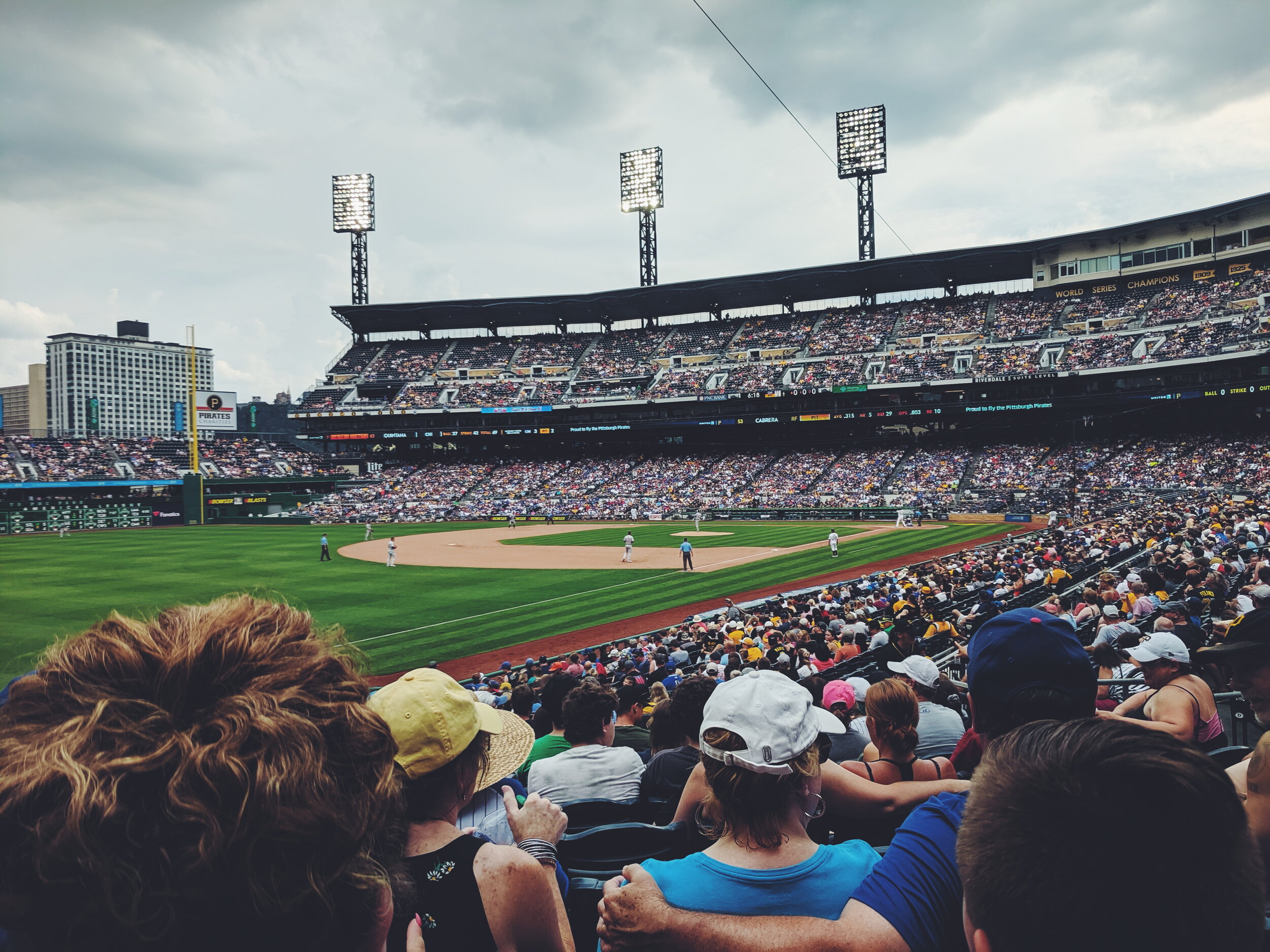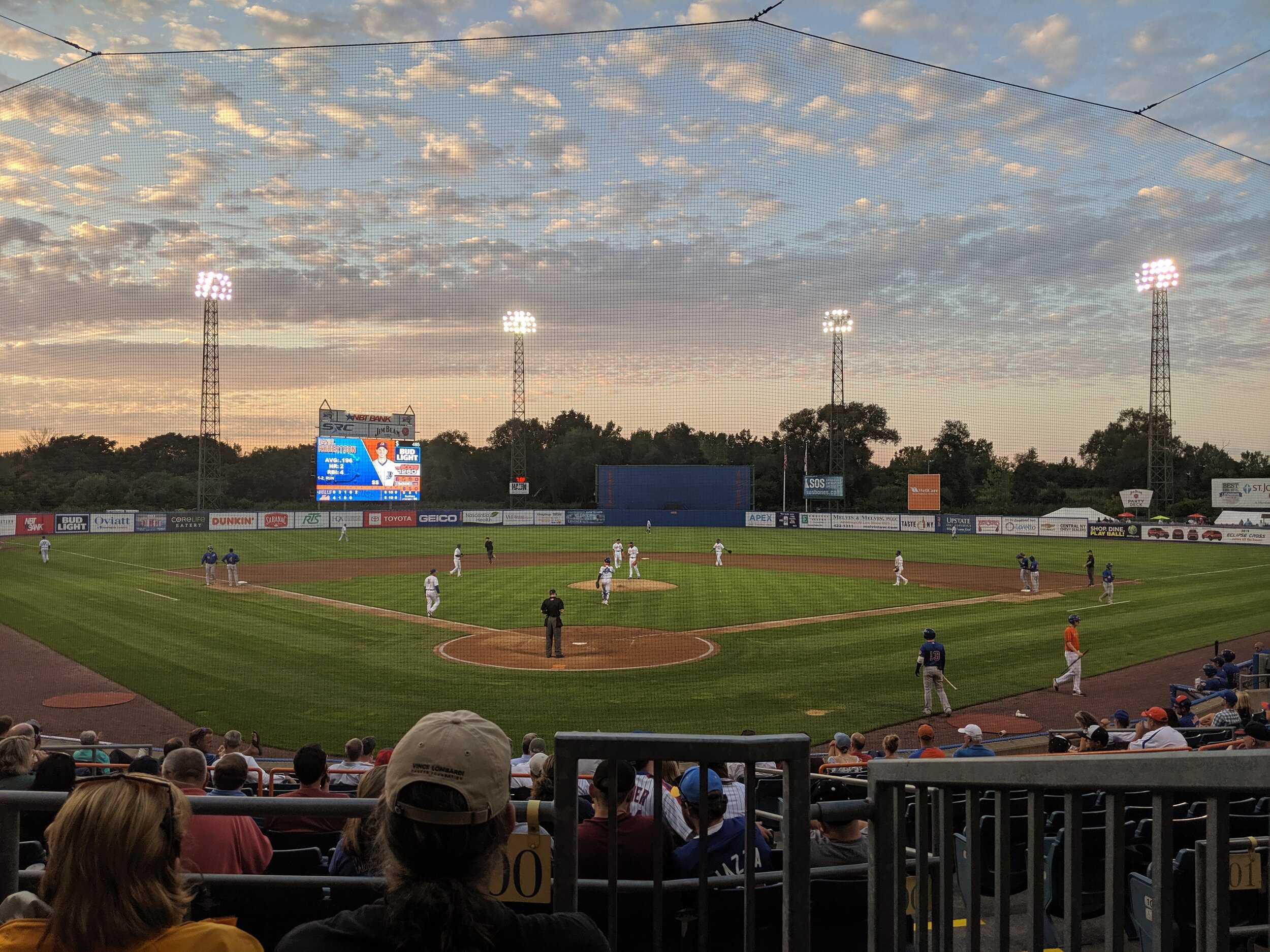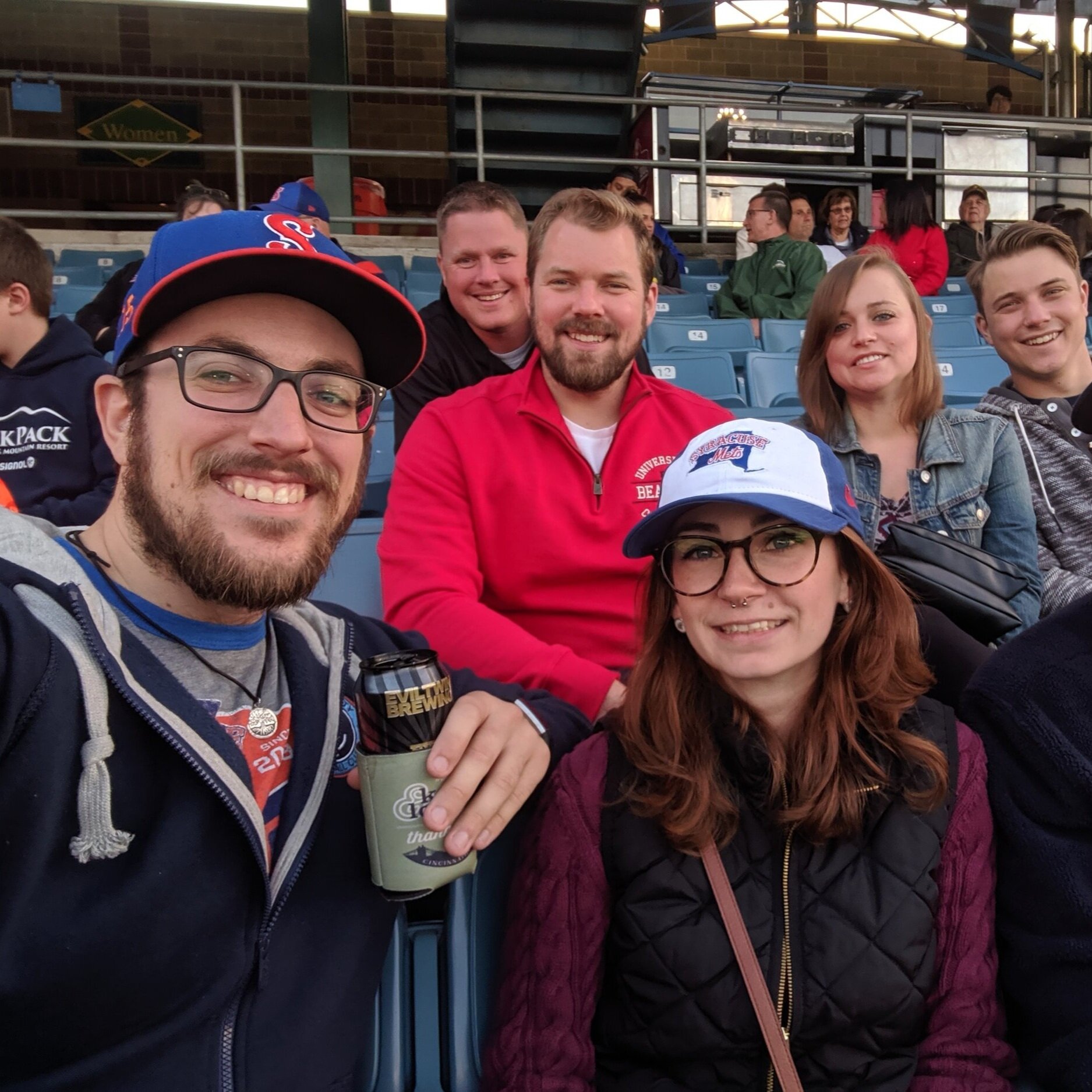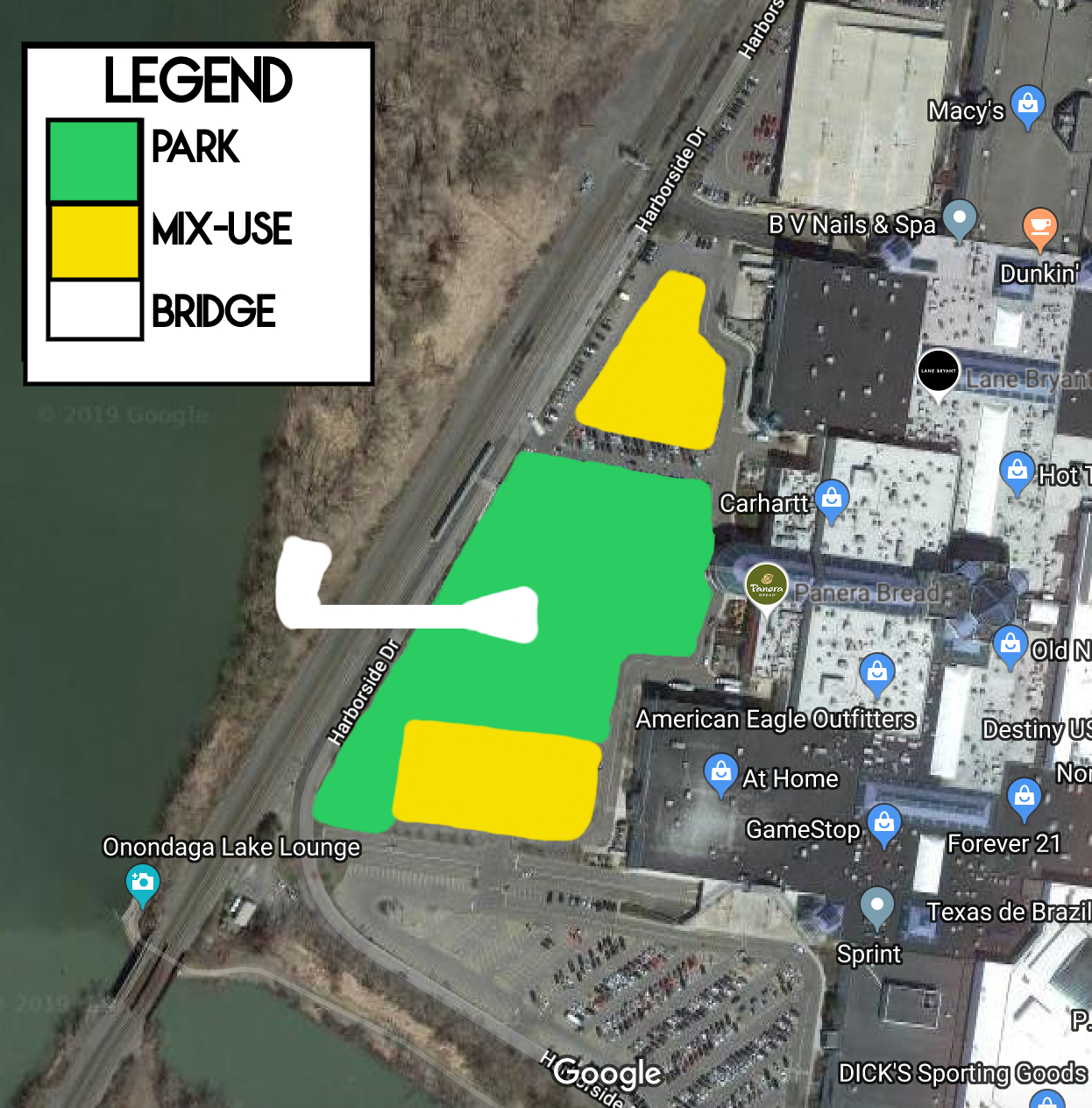Increasingly it feels as though society has become more isolated. Often we blame phones and social media, but those don’t necessarily have to isolate us. In the right context they can be used to bring us together and keep us involved with those that matter to us. Another usual talking point is the decreasing importance of organized religion in much of the country. While I don’t believe the specific religion is important, I do believe there is something about having a set aside time to be with others that you don’t work with and are not related to. Religion is not the only thing that brings people together, but in some ways it is the most apt comparison to how I feel about going to a ballgame.
Growing up, every family trip revolved around a baseball game. Pittsburgh, Toronto, New York, Cleveland, all great cities to visit and all have a major league baseball team. Two things were guaranteed on a family trip: church on Sunday and a baseball game Friday or Saturday, sometimes both. I wasn’t always the most interested in the game but I still loved the atmosphere at the big stadiums in these cities I always wanted to go to.
This past year was the first time I had invested in season tickets for the Syracuse Mets (previously the Chiefs), but over the last decade or so I’ve attended more and more games each season. While I was raised in a family that loved baseball, it took going to games with two of my closest friends, Rebecca and Terry, in high school to revive my interest in the game. We’d borrow extra tickets from Rebecca’s parents, who had season tickets, and sit amongst their usual seat neighbors in section 207. At first it was just an excuse to hang out outside on a summer night, but quickly became something I just plain loved to do.
An article from The Athletic described baseball as a sport that you come back to as you get older. Some people stay with the game their entire life, others drift away and return, but almost always to the team of their childhood. That is something unique to baseball over most other sports; the dedication to a team and a place, not a big name player (which is often the case in the NBA and, at times, soccer). But there is a reason that you come back to baseball, and it may be that communal experience that, to me, is unlike other sports.
Over the last season in Syracuse I became one of those fans at a majority of games and began to recognize many of the same faces day after day. You don’t know them, but at the same time it’s nice to know they are there with the same spirit you have for the team. The GM wanders the stands and greets fans, often stopping to talk as he gets to know you more. Baseball has a pace that lets you wander the stadium and see people that you didn’t come to the game with but know they are there. While the game is the central focus, the social atmosphere adds to the experience and is part of why we think of our memories of coming to the ballpark with such fondness. These are the moments that remind me of church and the feeling of being part of a community.
This community continues online with local fan pages that post photos of kids and families at the ballpark and organized events to root for the team. In some ways, this fanbase feels more intimate because it’s for a minor league team in a smaller stadium. It lets the fans feel more connected to the game and to each other. These are some of the reasons I have focused so much on how to improve the area around NBT Bank Stadium as I feel the community of fans and neighbors deserve a place that reflects the communal aspect of the game of baseball. But these same feelings can be felt at major league stadiums, which is why fans make journeys to see their favorite teams play and why so many people wear baseball caps of those teams.
I may not consider myself to be a very religious person, but I do believe the ballpark is a special place that can help provide that sense of belonging that religion has in the past. How people find community does not matter, as long as they feel as though they belong. For me that is how I feel when I’m at the ballpark.
NBT Bank Stadium
































